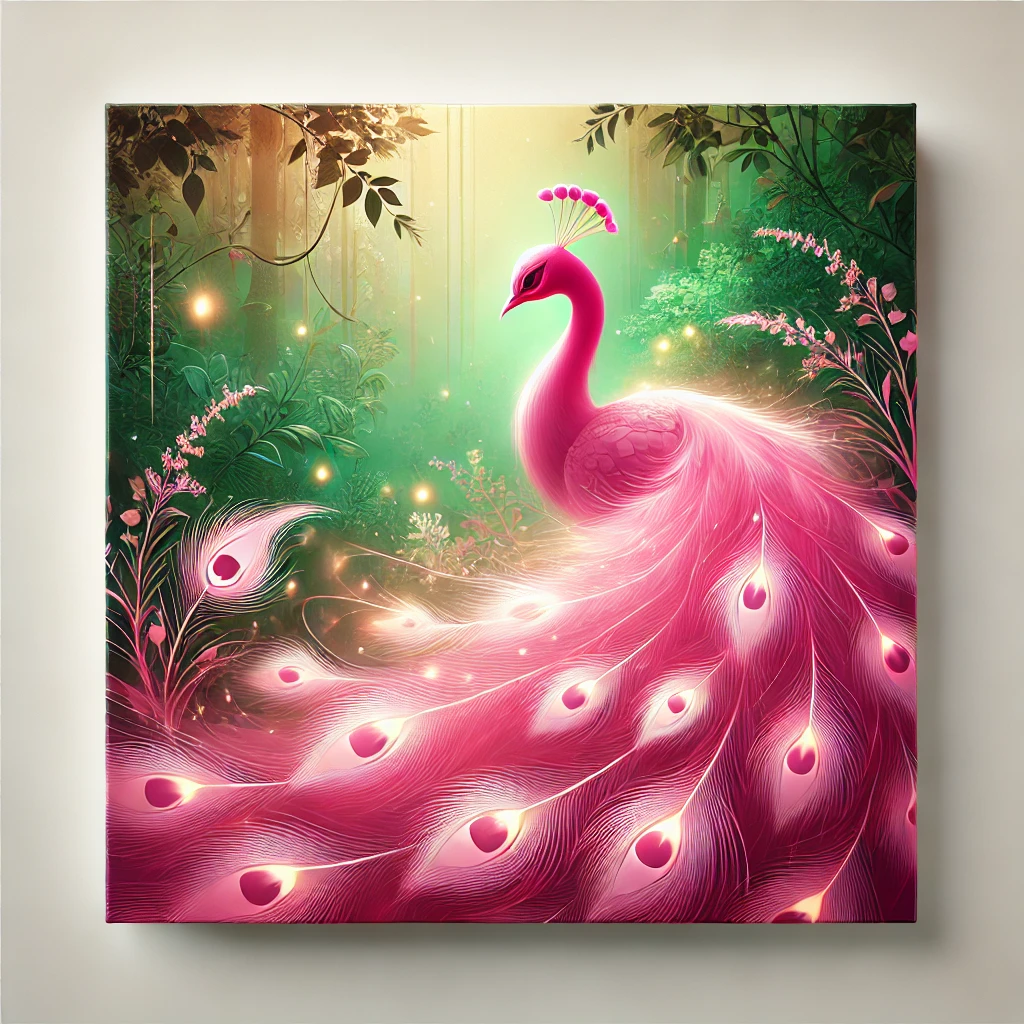Peacocks are among the most stunning birds worldwide, known for their iridescent plumage and captivating displays. While blue and green peacocks dominate the imagination, the idea of a pink peacock evokes even greater fascination. But are pink peaccks real, or are they simply the product of artistic interpretations and digital manipulation? Let’s explore the concept of pink peacocks, their symbolism, and the natural phenomena that might explain their existence.
Are Pink Peacocks Real?
The existence of pink peacocks has been a subject of debate. In nature, no peacock species exhibits naturally pink feathers. However, this does not entirely rule out the possibility of pink plumage. There are three critical explanations for pink-colored peacocks:
- Genetic Mutations: Some peacocks may develop pigmentation variations due to rare genetic mutations. While uncommon, such variations could lead to feathers appearing pinkish.
- Albino or Leucistic Peacocks: Albino and leucistic peacocks are white, but environmental factors, such as lighting and reflections, could create an illusion of pink hues in their feathers.
- Artificial Dyeing or Editing: Images of pink peacocks often result from artificial dyeing or photo editing, which enhances the color to appear vibrant and unique.
While no naturally occurring pink peacock has been officially documented, these possibilities keep the concept alive in popular imagination.
The Symbolism of the Pink Peacock
Peacocks hold deep cultural and spiritual significance worldwide. A pink peacock, though rare, has symbolic interpretations that resonate with beauty, rarity, and transformation:
- Elegance and Grace: The pink hue is associated with femininity, love, and grace, making the concept of a pink peacck a symbol of refined beauty.
- Individuality: Pink peacocks represent uniqueness and rarity, appealing to those who value standing out.
- Spiritual Growth: In some cultures, the peacock symbolizes immortality and renewal. A pink peacck could symbolize the gentle yet powerful aspect of transformation.
Scientific Phenomena That Mimic Pink Plumage
While actual pink peacocks are not known to exist, there are scientific phenomena that can produce pinkish hues in bird feathers:
- Pigmentation Variations
Bird feathers get their color from pigments and structural coloration. Carotenoids, the pigments responsible for birds’ red, orange, and yellow colors, could theoretically result in pink tones if combined with other factors.
- Environmental Influence
Lighting and environmental conditions, such as sunrise or sunset, can create the illusion of pink tones on white or albino peacocks. This effect is particularly striking when the feathers reflect warm-colored light.
- Diet
Some birds exhibit color changes in their plumage due to their diet. Flamingos, for instance, are pink because of carotenoid-rich food like algae and crustaceans. Hypothetically, a similar diet could affect peacocks’ pigmentation.
Pink Peacock in Art and Culture
The pink peacock has found a place in art, literature, and popular culture:
- Fashion and Design: Designers often use the pink peacok,s, to symbolize luxury and sophistication.
- Artwork: Paintings and digital art frequently feature pink peaocks as mythical or dreamlike creatures.
- Cultural Festivals: In some celebrations, white peacocks are dyed pink to create visually stunning spectacles.
These interpretations demonstrate the pink peacok’s strong appeal as a symbol of beauty and creativity.
How to Create the Illusion of a Pink Peacock
Although pink peacocks do not exist naturally, you can replicate their beauty in various ways:
- Photography Filters: Photographers often use filters and post-processing tools to add pink hues to images of white peacocks.
- Lighting Effects: Strategic lighting can give white feathers a soft pink glow, which is ideal for artistic photography.
- Artistic Renderings: Paintings, sculptures, and illustrations of pink peacocks bring the concept to life imaginatively.
These techniques allow people to enjoy the beauty of pink peacocks without altering nature.
FAQs About Pink Peacock
- Are pink peacock,s an actual species?
No, pink peacok,s are not a naturally occurring species. However, genetic mutations, lighting effects, or artificial dyeing can create the appearance of pink plumage.
- Why do people believe in pink peacocks?
The belief in pink peacok,s often stems from digitally edited images, artistic depictions, or the idea of unique pigmentation mutations.
- Can a peacock’s diet affect its color?
While peacocks do not naturally develop pink feathers from their diet, other birds, like flamingos, are known to gain their pink hue from carotenoid-rich food sources.
- How can I see a pink peacock,?
To see a “pink peacok,s,” look for artistic renderings, digitally enhanced photographs, or staged setups using lighting effects on white peacocks.
- What do pink peacok,s symbolize?
Pink peacok,s symbolize rarity, elegance, transformation, and individuality, making them a popular motif in art and culture.
Conclusion
While pink peacock,s remain more a product of imagination and artistry than nature, their allure lies in their uniqueness and symbolic significance. Pink peacck.s continue to captivate people worldwide, from genetic possibilities to artistic interpretations. Whether admired in art, photography, or cultural symbolism, the pink peacck,s remains a rare phenomenon that sparks curiosity and wonder.
You May Also Read: https://techlivenews.co.uk/
